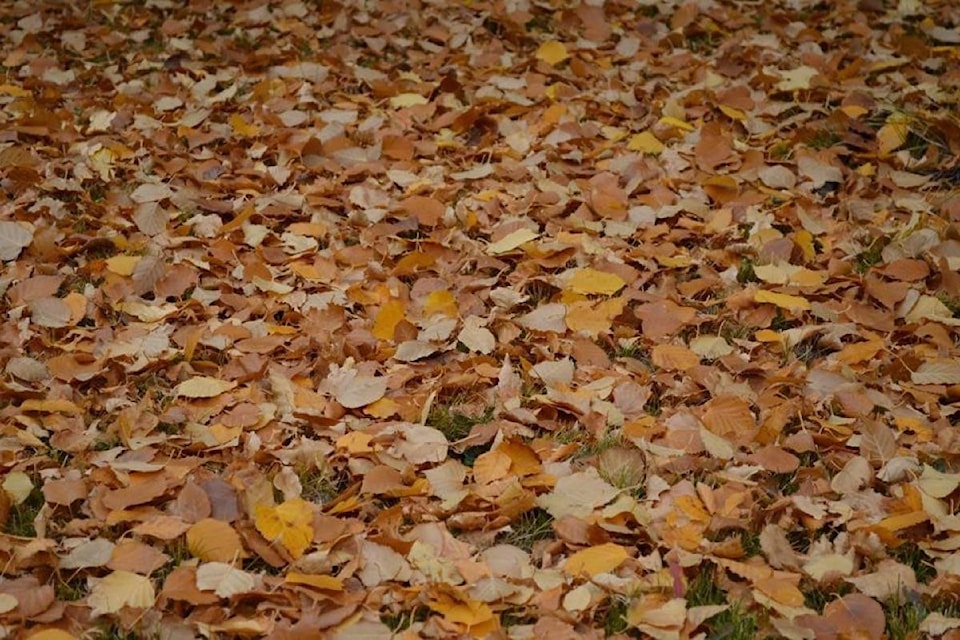Every fall people delight in the beautiful display of colour as trees go from green to stunning shades of red, yellow, and gold. However, the downside is that soon after comes the task of raking all those leaves.
Those looking to avoid—or at least delay—raking leaves can now cite the Nature Conservancy of Canada (NCC), which has advice to help avoid the sometimes back-breaking work: leave the rake in the shed and leave the leaves on the ground.
Keeping a layer of leaves on the ground is a small act of conservation that can support backyard biodiversity in many ways, the not-for-profit land conservation group notes. Migratory birds and some butterflies head to warmer climes in fall and winter, but many native insects (including pollinators) and other backyard wildlife, such as toads, hibernate through the winter, and can use some help from us.
“A couple of layers of leaves are good for pollinators, moths, and butterflies,” says Andrew Holland, the NCC’s National Media Relations Director. “It’s good for insects, which are an important food source for birds in the spring.
“It’s helping pollinators, birds, butterflies, and toads, which is important for nature. Having lots of species around is an indicator of the health of our neighbourhoods and communities.”
In addition to providing an important habitat for hibernating wildlife, which insulates them and protects against the cold and temperature fluctuations, leaving the leaves on the ground helps improve the soil.
“Leaves add nutrients to soil,” says Holland. As the leaves break down, they provide a natural mulch which enriches the soil. If you have too thick a layer of leaves on the lawn it can impact grass growth, but a light covering can improve the health of lawns and gardens.
Some of their carbon also gets stored in the soil, allowing backyards to become carbon sinks. While leaves and other garden waste can be taken to the landfill, the most energy-efficient solution is to allow nature to do its thing and for the leaves to naturally break down in yards.
“If you get a lot of leaves put them under shrubs and trees away from the house, where they can protect the root systems of your grass and shrubs, and protect against the freeze-thaw cycle,” says Holland. “My mom is set in her ways and doesn’t like leaves, so we’ll blow them under shrubs, which is good for richness and helps stabilize the soil.”
He advises against leaving piles of leaves on the lawn.
“People ask if not raking leaves will attract rats and mice. Yes; if you leave piles they could become nesting areas for mice and rats. That’s not a good situation, and the leaves will get wet and moldy. If you just let them fall to the ground they won’t attract rats.”
Holland notes that a layer of leaves will help absorb water. “That’s good for your lawn and slows water runoff, which is good for lakes, rivers, and streams. It saves soil from going off your lawn, and another benefit is that it helps fish habitats.”
The NCC also encourages people not to clean up their gardens entirely, as plant stalks and dead branches provide important winter habitats for many creatures. Birds can also benefit from fruits and seeds left on trees, flowers, and shrubs, using them as a crucial food source to sustain them during winter.
Holland says that if you have a real Christmas tree, you can throw it in the backyard when the holidays are over.
“Birds can use it for warmth. That tree in the yard can be a warm habitat for some of those winter months. And some branches will break down and recycle back into your yard. Some people cut holes in the tree stump to accelerate the pace of decay as the tree breaks down.
“The tree had life in your house, where it was beautiful, decorated, and a source of enjoyment. By throwing the tree in your backyard you’re extending its life and helping birds. It’s better than throwing it in the landfill.”
Holland admits that leaving the leaves might not be a one size fits all solution.
“I live on a corner lot with a storm drain out there, so I don’t want to have a bunch of leaves clog it up when there’s heavy rain and have water run up on neighbours’ properties. You have to exercise common sense. And clean up pine needles, because they’re very acidic and harmful for the soil.
“And you might feel some peer pressure if other neighbours have immaculate lawns. They might frown on your leaves blowing into their yard and give you some side-eye. You don’t want to be that neighbour.”
However, Holland notes that leaving the leaves in the fall doesn’t mean never dealing with them.
“By Mother’s Day hopefully winter’s done, and you can pick up leaves for the spring yard cleanup. We’re not telling people to leave them there forever and ever, but just for winter.”
He says that leaving the leaves is what the NCC refers to as a small act of backyard conservation.
“By leaving a layer or two on the ground you’re saving some money on fertilizer, and doing birds a favour. If someone gives you a hard time tell them it’s an environmentally friendly thing to do, and that the NCC told me I’m doing the right thing.
”It’s good to rake some, so get out and get some fresh air, but leave some leaves.”
editorial@accjournal.ca
Like us on Facebook and follow us on Twitter
